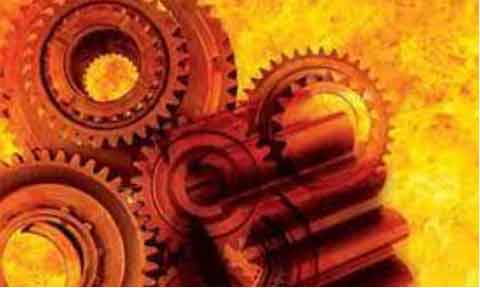Dimensional issues, such as warping and distortion, are common challenges encountered during heat treatment processes. These problems can arise due to the complex interplay of thermal stresses, material properties, and process variables. Addressing dimensional issues is crucial to ensure the dimensional accuracy and functional integrity of heat-treated components. This article explores the causes of warping and distortion in heat treatment and provides strategies for dealing with these dimensional issues effectively.

1.Non-Uniform Heating and Cooling:
- Cause: Non-uniform heating and cooling rates during the heat treatment process can result in differential thermal expansion and contraction, leading to warping and distortion.
- Strategies:
- Implement proper fixturing and part design to promote uniform heat distribution.
- Optimize heating and cooling parameters, such as heating rates, soaking times, and quenching techniques, to achieve uniform temperature profiles.
- Consider the use of controlled heating and cooling methods, such as preheating or stepped quenching, to minimize thermal gradients.
2.Residual Stresses:
- Cause: Residual stresses, which are internal stresses remaining in the material after heat treatment, can cause warping and distortion as they seek to relieve themselves.
- Strategies:
- Employ stress-relieving techniques, such as tempering or annealing, to reduce residual stresses.
- Optimize heat treatment parameters, including cooling rates and holding times, to minimize the introduction of excessive residual stresses.
- Utilize fixtures or support structures during heat treatment to control the deformation and distribute stresses more evenly.
3.Material Selection and Design:
- Cause: Inappropriate material selection or inadequate part design can contribute to warping and distortion during heat treatment.
- Strategies:
- Choose materials with suitable properties, including thermal stability and low coefficient of thermal expansion, to minimize dimensional changes.
- Optimize part geometry and consider the use of fillets or radii in design to reduce stress concentrations.
- Perform computer-aided simulations or modeling to predict potential warping and distortion issues and make design modifications accordingly.
4.Quenching Techniques:
- Cause: Improper quenching techniques, such as using the wrong quenching media or insufficient agitation, can lead to uneven cooling and subsequent warping and distortion.
- Strategies:
- Select appropriate quenching media based on material and component requirements.
- Ensure adequate agitation or circulation during quenching to promote uniform cooling.
- Consider using specialized quenching methods, such as spray quenching or accelerated cooling, to minimize distortion.
5.Fixturing and Part Orientation:
- Cause: Improper fixturing or part orientation can result in uneven heat distribution and localized stresses, leading to warping and distortion.
- Strategies:
- Optimize the design and positioning of fixtures to support the component during heat treatment and minimize distortion.
- Consider the use of sacrificial or adjustable fixtures to accommodate dimensional changes during heat treatment.
- Properly orient the parts to balance thermal gradients and stress distribution.
6.Post-Heat Treatment Processes:
- Cause: Inadequate handling or machining after heat treatment can induce warping and distortion in the heat-treated components.
- Strategies:
- Allow sufficient cooling and stabilization time before performing any post-heat treatment processes, such as machining or grinding.
- Use appropriate fixturing or support during post-heat treatment operations to minimize distortion.
- Apply machining or surface finishing techniques that minimize material removal and reduce the risk of introducing additional stresses.
Dealing with dimensional issues, such as warping and distortion, in heat treatment requires a systematic approach that addresses the underlying causes. By implementing strategies to promote uniform heating and cooling, minimize residual stresses, optimize material selection and design, and utilize appropriate fixturing and quenching techniques, manufacturers can effectively manage dimensional issues. Continuous process monitoring, evaluation, and improvement are key to achieving dimensional accuracy and high-quality heat-treated components.
